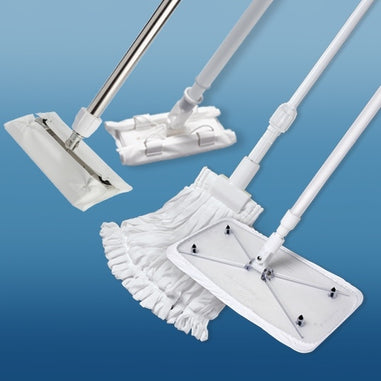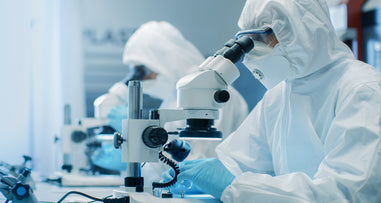- No products in the cart.
Cleanrooms play a pivotal role in industries where contamination control is critical, such as pharmaceuticals, electronics, and healthcare. These controlled environments are designed to minimize airborne particles, microbes, and other contaminants, ensuring the integrity of products and processes. To maintain high standards of cleanliness and regulatory compliance, organizations often undergo ISO cleanroom inspections. In this blog, we will explore the significance of ISO cleanroom inspections, the regulatory framework, and best practices for navigating them successfully.
Understanding ISO Cleanroom Standards
The International Organization for Standardization (ISO) sets the global standards for cleanrooms and controlled environments. These standards, particularly ISO 14644-1, provide guidelines for cleanliness levels based on particle counts in the air. The ISO cleanroom standards ensure consistency in cleanroom design, construction, operation, and maintenance across industries.
Why Are ISO Cleanroom Inspections Important?
-
Regulatory Compliance: Many industries have strict regulatory requirements regarding cleanroom facilities. Complying with ISO standards ensures that your cleanroom meets these regulations.
-
Product Quality: Cleanrooms are essential in manufacturing industries like pharmaceuticals and electronics, where product quality is paramount. ISO cleanroom inspections help maintain the quality and integrity of products.
-
Healthcare and Safety: Cleanrooms are critical in healthcare settings, particularly in sterile compounding and surgical environments. ISO inspections ensure patient safety and infection control.
-
Risk Mitigation: Inspections help identify potential issues before they become critical, reducing the risk of contamination, product recalls, and regulatory penalties.
The ISO Cleanroom Inspection Process
ISO cleanroom inspections involve a series of assessments, checks, and tests to verify compliance with ISO standards. Here's a simplified overview of the inspection process:
-
Preparation: Before the inspection, ensure that your cleanroom meets the design and construction requirements outlined in ISO standards.
-
Documentation Review: Inspectors review documentation related to cleanroom design, testing, certification, maintenance, and training records.
-
Visual Inspection: A thorough visual examination of the cleanroom is conducted to check for any visible issues, including structural problems, cleanliness, and equipment condition.
-
Particle Counting: Airborne particle counts are measured using particle counters, comparing the results with ISO standards to determine cleanliness levels.
-
Pressure Differentials: Verify that pressure differentials are maintained to prevent contaminants from entering the cleanroom.
-
Airflow and Ventilation: Assess the performance of HVAC systems to ensure proper airflow and filtration.
-
Microbial Monitoring: In healthcare and pharmaceutical settings, microbial monitoring may be conducted to identify potential sources of contamination.
-
Personnel Practices: Inspectors assess personnel gowning procedures, hygiene, and training to ensure that employees are not introducing contaminants.
-
Equipment Calibration: Ensure that cleanroom equipment is properly calibrated and maintained for accuracy and reliability.
-
Reporting: After the inspection, the findings are documented in a report, including any deficiencies or non-compliance issues.
Best Practices for Successful ISO Cleanroom Inspections
Navigating ISO cleanroom inspections successfully requires careful planning and adherence to best practices:
-
Routine Testing and Monitoring: Regularly test and monitor your cleanroom environment to identify and address issues proactively.
-
Documentation: Maintain accurate and up-to-date records of cleanroom design, maintenance, and certification.
-
Training: Ensure that cleanroom personnel are well-trained in cleanroom procedures, hygiene, and gowning.
-
Preventive Maintenance: Implement a robust preventive maintenance program for cleanroom equipment and HVAC systems.
-
Consult Experts: Seek guidance from experts in cleanroom design and certification to ensure your facility complies with ISO standards.
-
Mock Inspections: Conduct internal mock inspections to identify and address potential issues before external audits.
-
Continuous Improvement: Use inspection findings as opportunities for continuous improvement in cleanroom operations and maintenance.
Conclusion
ISO cleanroom inspections are a critical aspect of ensuring that controlled environments meet regulatory standards and maintain the highest levels of cleanliness and contamination control. Compliance with ISO cleanroom standards is not just a regulatory requirement; it's an investment in product quality, patient safety, and operational excellence.
By understanding the importance of ISO cleanroom standards, preparing meticulously, and following best practices, organizations can navigate cleanroom inspections successfully. This commitment to regulatory excellence not only safeguards product integrity but also enhances the reputation and trust of the organization in industries where cleanliness is paramount.
For over 40 years, Lab Pro Inc. is your steadfast source for premium cleanroom lab supplies, hand tools, lab equipment, chemicals, and PPE apparel. Trusted by aerospace industries, medical device companies, and laboratories globally, we epitomize exceptional quality in every product. Experience the convenience of next day service in California. Contact us online or at 888-452-2776 to explore solutions tailor-made for the laboratory industry. Elevate your experiments with Lab Pro Inc. – your partner in precision and excellence.












































